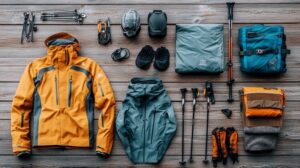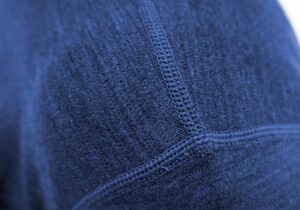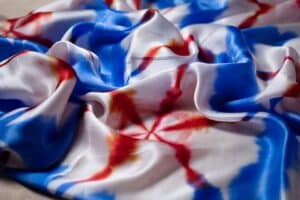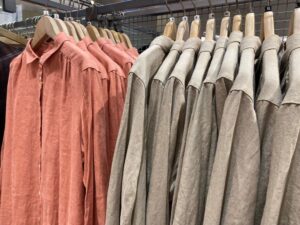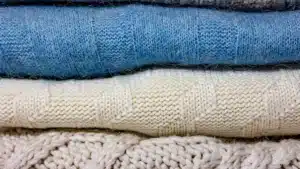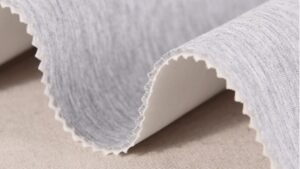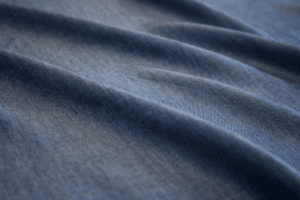When it comes to outdoor clothing, durability is key. Whether you're hiking through rugged terrain, climbing a rocky peak, or simply braving the elements, your gear needs to withstand the challenges of the great outdoors. One of the most innovative solutions to ensure longevity and resilience in outdoor apparel is the use of ripstop fabrics.

Ripstop fabrics are a big improvement for outdoor clothing. These fabrics have a special grid pattern with thicker threads. The thicker threads are woven into a thinner base material. This design stops small rips from getting bigger. For example, if a tear starts, the strong threads keep it in one square.
This smart design is great for tough activities like hiking or camping. It helps your gear stay strong in hard conditions. Ripstop fabrics use synthetic fibers placed evenly in the material. This makes them tough but still lightweight. The mix of strength and lightness is perfect for outdoor adventures.
Key Takeaways
-
Ripstop fabrics have a special grid design that stops small rips from getting bigger. This keeps your outdoor gear strong.
-
These fabrics are light but tough, perfect for hiking, camping, and outdoor fun without being heavy.
-
Materials like nylon and polyester in ripstop are great at handling weather. They help keep you dry and comfy in different conditions.
-
When buying outdoor gear, check for the grid pattern. It helps you pick strong and dependable items for rough use.
-
Ripstop fabric is simple to fix. You can repair small tears fast and make your gear last longer.
What Are Ripstop Fabrics?
Definition and Characteristics
Ripstop fabric is a special textile made to stop tears. It is both light and strong, making it great for outdoor gear. You can spot ripstop fabric by its crisscross pattern. This pattern is made by weaving thick threads into thin material. The result is a fabric that stays tough without being heavy.
Here are some main features of ripstop fabric:
-
Light but strong.
-
Tear-proof because of its reinforced grid design.
-
Strong enough for camping gear and military use.
This fabric was first created in World War II to make parachutes stronger. Today, it’s a favorite for outdoor lovers and professionals.
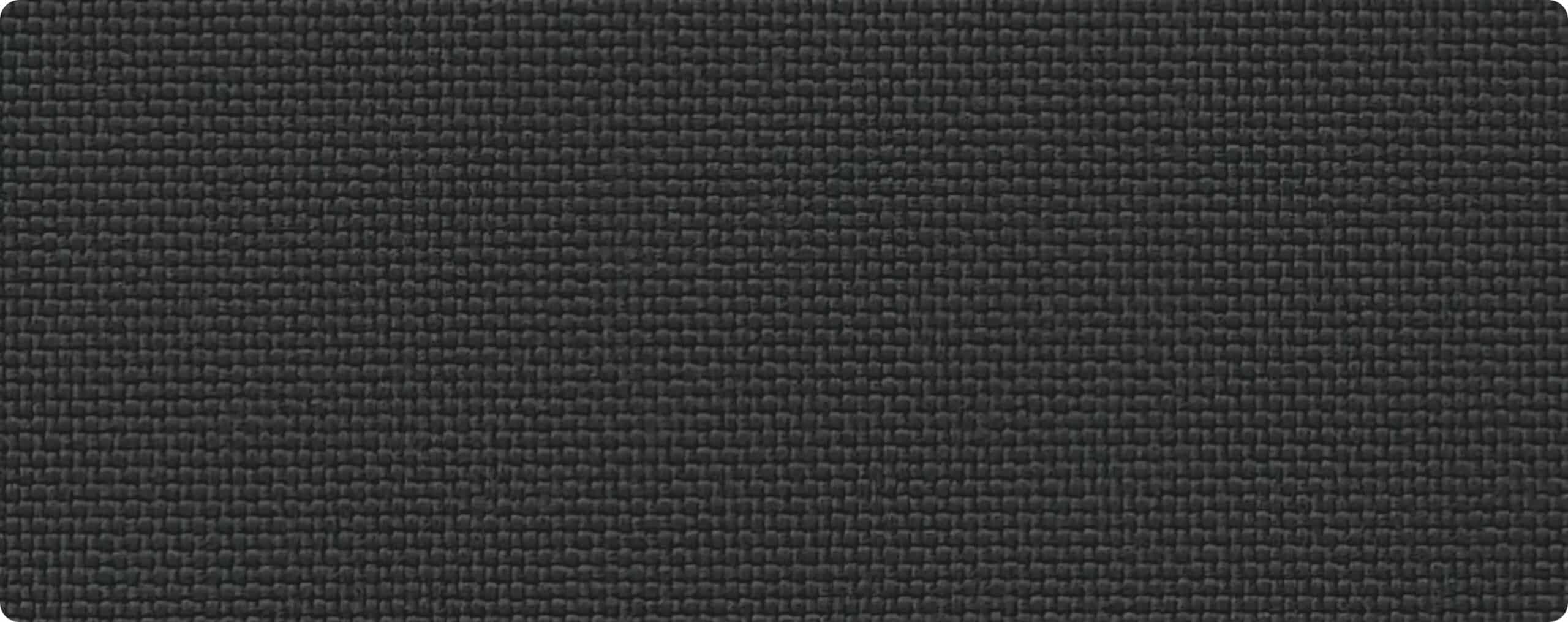
The Grid Pattern and Reinforced Threads
The grid pattern gives ripstop fabric its strength. Thick threads are woven into the material every 5 mm to 8 mm. These threads block small tears from spreading. If a tear starts, the grid keeps it in one square, protecting the fabric.
This design uses both horizontal and vertical threads to make it stronger. The grid not only adds strength but also gives the fabric a unique look. You might see this pattern on jackets, tents, or backpacks. It shows the fabric is tough and dependable.
Materials Used in Ripstop Fabric
Ripstop fabric is made from different materials, each with its own benefits. Nylon and polyester are the most popular. Nylon is very strong and flexible. Polyester resists sunlight and water damage. Some ripstop fabrics also use cotton for comfort or mix materials for balance.
Here’s a quick look at common materials:
-
Nylon: Strong, light, and flexible.
-
Polyester: Protects against UV rays and water.
-
Cotton: Soft and breathable, often mixed with synthetics.
These materials make ripstop fabric useful in many situations. Whether hiking in mountains or camping in rain, ripstop fabric keeps your gear strong and reliable.
How Ripstop Fabrics Stop Tears
How It Resists Tearing
Ripstop fabric is made to stop tears quickly. It has a special grid pattern with thicker threads in a thin base. This design blocks small rips from growing bigger. When a tear starts, the thick threads spread out the force. This keeps the damage small and under control. Smaller grids make the fabric even stronger, so it stays light but tough.
Tests show ripstop fabric makes materials like nylon much stronger. This is why it works well in tough conditions. Whether hiking on rough trails or camping, this design keeps your gear safe.
How Reinforced Threads Help
The strong threads in ripstop fabric are very important. They are woven in a crisscross grid that acts like a safety net. If a tear happens, the grid traps the damage in one spot. This stops the rip from spreading across the fabric.
| Feature | What It Does |
|---|---|
| Grid Pattern | Thick threads in a thin fabric create a strong structure. |
| Tear Containment | Keeps rips small so the fabric stays useful. |
| Force Redistribution | Spreads out the force of a tear, making it last longer. |
This design is great for outdoor and heavy-duty gear. For example, in climbing or military use, the strong threads keep clothes and tools working well.
Real-Life Tear Prevention
Ripstop fabric is loved by campers and outdoor workers. It’s used in backpacks, tents, and sleeping bags because it’s so strong. Military uniforms and hunting gear also use it to handle tough use.
Picture yourself camping in the woods. A sharp stick scratches your tent, causing a small rip. The ripstop weave keeps the tear in one square, so your tent still works. The same happens with a rip in a ripstop backpack—it won’t spread, keeping your stuff safe.
Ripstop fabric is strong but not heavy. This makes it great for hard adventures. Whether climbing mountains or hiking through forests, ripstop fabric keeps your gear working well.

How is Ripstop Fabric Made?
Ripstop fabric is made with care to be strong and light. Its special design makes it tough but not heavy. Here’s how it’s created:
Step-by-Step Process
-
Fiber Preparation: Nylon or polyester threads are prepared and strengthened. Thicker fibers are chosen to make the fabric tear-resistant.
-
Weaving: Threads are woven in two directions—up and across. Thicker threads are added in a grid pattern for extra strength. This grid is the base of ripstop fabric.
-
Final Treatments: The fabric is treated to improve its features. Coatings can make it resist water, block UV rays, or even stop fire.
Materials Used
Ripstop fabric uses different materials, each with special qualities:
-
Nylon: Strong and flexible.
-
Polyester: Blocks sunlight and resists water.
-
Cotton: Soft and breathable.
-
Polypropylene: Light and tough for certain uses.
Why the Grid Pattern Matters
The grid pattern is made during weaving. It’s not just for looks—it makes the fabric strong. The thicker threads stop small rips from spreading. This keeps your gear safe in rough conditions.
Tip: Check for the grid pattern when buying outdoor gear. It shows the fabric is durable and reliable.
This careful process makes ripstop fabric perfect for outdoor adventures. Whether hiking, camping, or climbing, it keeps your gear strong and ready to use.
Benefits of Ripstop Fabrics in Outdoor Clothing
Durability and Tear Resistance
Ripstop fabric is very strong and long-lasting. It has a special square pattern with extra nylon or polyester threads. These threads stop tears from spreading further. Even if a small rip happens, it stays in one spot. This keeps the fabric strong and useful.
-
The square pattern makes the fabric stronger.
-
Nylon and polyester threads add extra durability.
-
Tears stay small, keeping the fabric in good shape.
This strength makes ripstop fabric great for outdoor clothes. Whether hiking in thick woods or climbing rocky trails, your gear will hold up well.
Lightweight and Comfortable Design
Ripstop fabric is strong but also light, perfect for outdoor wear. The square weave uses extra threads to stop tears without adding weight. This mix of strength and lightness keeps your clothes comfy for long trips.
-
Ripstop fabric is both strong and lightweight.
-
Nylon and polyester make it durable and light.
-
The design stops tears while staying comfortable.
You’ll love how light it feels when wearing jackets or carrying gear. It helps you stay less tired and enjoy your adventures more.
Weather Resistance and Versatility
Ripstop fabric works well in all kinds of weather. It keeps you dry during rain and stays light and comfy. Its tear resistance makes it tough for rough conditions.
| Feature | Benefit |
|---|---|
| Tear Resistance | Stops rips from spreading, keeping it strong. |
| Lightweight | Great for gear where weight matters. |
| Water Resistance | Protects you from rain and wet conditions. |
| Versatility | Works for many outdoor activities and gear. |
Whether camping, hiking, or exploring, ripstop fabric fits your needs. It’s tough and reliable, making it a favorite for outdoor fans.
Common Applications of Ripstop Fabrics
Jackets and Outerwear
Ripstop fabric is important for outdoor jackets and coats. It’s used in windbreakers, raincoats, and warm jackets. This fabric is strong but light, making it great for outdoor use. It dries fast and lets air through, keeping you comfy on hikes or camping trips. Its tear-resistant grid stops rips from spreading, so your jacket stays in good shape.
-
Ripstop fabric is common in outdoor clothing.
-
It’s breathable, strong, and dries quickly.
-
Great for jackets that face tough outdoor conditions.
Choosing a jacket with ripstop fabric means better protection. Whether climbing mountains or walking in forests, this fabric keeps your jacket working well.
Tents and Camping Gear
Ripstop fabric is key for strong and reliable camping gear. Its tear-resistant design stops small rips from growing. This is very helpful when camping in rough areas. For example, if your tent touches sharp rocks, ripstop fabric keeps it from tearing easily.
The fabric is also lightweight, so carrying your gear is easier. Many tents, tarps, and sleeping bags use ripstop fabric. It balances strength and lightness, making it a top choice for outdoor gear.
Tip: Check for the grid pattern when buying camping gear. It shows the fabric is tough and long-lasting.
Backpacks and Travel Accessories
Backpacks made with ripstop fabric are tough and long-lasting. Whether hiking rough trails or traveling, this fabric protects your gear. The tear-resistant grid keeps your backpack safe from rips caused by branches or sharp items.
Ripstop fabric also helps backpacks resist rain and moisture. It’s light but strong, perfect for travel bags, pouches, and packing cubes. This fabric mixes strength with usefulness, making outdoor trips easier.
Fun Fact: Military backpacks often use ripstop fabric because it’s so durable and reliable.
Ripstop Fabrics vs. Other Materials
Comparison with Standard Woven Fabrics
Ripstop fabric is stronger than standard woven fabrics. Regular woven fabrics use a simple weaving method. This creates a smooth texture but no extra strength. Small tears in these fabrics can spread quickly, making them less durable.
Ripstop fabric, however, has thicker threads in a grid pattern. This grid stops tears from spreading further. In tough conditions, ripstop fabric stays strong. Standard woven fabrics may fail, but ripstop keeps your gear safe.
| Feature | Standard Woven Fabrics | Ripstop Fabric |
|---|---|---|
| Tear Resistance | Low | High |
| Durability | Moderate | Excellent |
| Weight | Varies | Lightweight |
Comparison with Synthetic Alternatives
Synthetic materials like nylon and polyester are common in gear. They are light and resist water but tear easily. Ripstop fabric improves these materials with its special grid design. This makes it tougher and more dependable.
For example, a nylon jacket without ripstop might rip on a branch. A ripstop nylon jacket would keep the tear small. This makes ripstop fabric better for outdoor clothing and gear.
Tip: Choose ripstop fabric for jackets and tents. It’s stronger and lasts longer.
Why Ripstop is Ideal for Outdoor Clothing
Ripstop fabric is great for outdoor clothing. Its tear-resistant design keeps your gear working in tough conditions. It’s lightweight, so it’s comfortable for long hikes or climbs. It also dries fast and resists water, perfect for bad weather.
Ripstop fabric is both strong and comfy. Whether hiking or climbing, it protects your gear. Its durability lets you enjoy adventures without worrying about damage.
Ripstop fabrics are super strong and resist tearing easily. They are light, so they feel comfy to wear. These fabrics also protect against bad weather, keeping you ready for adventures. Using ripstop fabrics makes your outdoor gear last longer and work better. Whether you’re hiking, camping, or exploring, this fabric keeps your stuff reliable. When buying outdoor gear, pick ripstop fabrics to stay prepared and protect your money.
FAQ
Why is ripstop fabric good for hiking?
Ripstop fabric is light, strong, and stops tears. Its grid design keeps small rips from spreading. This makes it perfect for tough outdoor activities like hiking.
Can ripstop fabric handle bad weather?
Yes, ripstop fabric blocks wind and water well. It also dries fast, so it works great in rain or cold. Whether hiking or camping, it keeps you protected.
Is ripstop fabric comfy to wear?
Ripstop fabric is light and lets air through. It feels good even on long outdoor trips. It’s tough but still comfortable, making it great for outdoor clothes.
How can I spot ripstop fabric in gear?
Check for a grid pattern on the fabric. This pattern, made with thicker threads, shows it’s ripstop. You’ll see it on jackets, tents, and backpacks for outdoor use.
Can you fix ripstop fabric if it tears?
Yes, you can fix it with patches or tape. The grid design keeps the tear small, so repairs are easy. This helps your gear stay useful after small damage.


